Then let us all do what is right, strive with all our might toward the unattainable, develop as fully as we can the gifts God has given us, and never stop learning. — Ludwig van Beethoven
This is a mammoth task, creating a whole new world. How will you keep track of your details? How will you be sure names don’t evolve? How will you know what visual or verbal markers go with which character for the length of a novel?
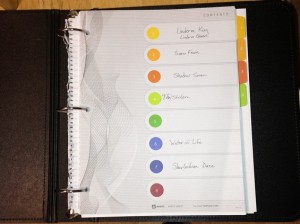 There are varying levels of tools at our disposal.
There are varying levels of tools at our disposal.
Since my story idea solidified in August, I have been jotting my discoveries in Evernote, on my phone. It’s almost always with me, it’s often what I’m listening to music on, and music is a big part of my preparation process (more on music later in the month). Apparently there are all sorts of bells and whistles to Evernote. I just use it as a notebook: I have a “pad” for each of my novels so I can capture an idea and put it in the right story from go.
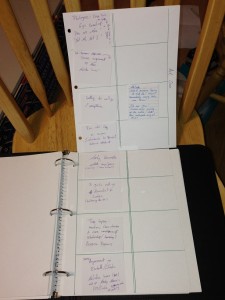 Roz Morris of Nail Your Novel urges you to scribble a line on half an index card– keep it short and sweet– so you have physical objects to lay out in different orders as you determine the flow of action.
Roz Morris of Nail Your Novel urges you to scribble a line on half an index card– keep it short and sweet– so you have physical objects to lay out in different orders as you determine the flow of action.
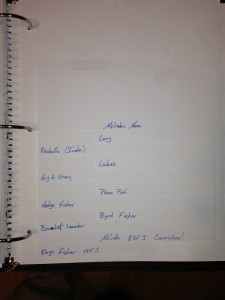 James V. Smith Jr. of You Can Write a Novel suggests index cards in a manila folder, taped only on one side, with the name of each character all that shows. You can note pertinent details (height, age, weight, visual or verbal tics) and keep them at your fingertips. You can even a glue a pic of an actor or model/magazine-random to the back of the card, allowing a quick remainder for visual continuity as you write.
James V. Smith Jr. of You Can Write a Novel suggests index cards in a manila folder, taped only on one side, with the name of each character all that shows. You can note pertinent details (height, age, weight, visual or verbal tics) and keep them at your fingertips. You can even a glue a pic of an actor or model/magazine-random to the back of the card, allowing a quick remainder for visual continuity as you write.
There’s also Randy Ingermanson‘s Snowflake Pro software that gives you places for all the details you can come up with in a database and/or process-based format.
Scrivener is another detail-collector, with a variety of features that I’ve found very helpful. This program has an active Table of Contents down the side and allows you to drag and drop whole scenes, allowing you to rearrange your novel without any cut-and-pasting.
I also find it helpful to create a folder in Scrivener for each character. I can include an interview sheet and digitally paste things like actor images that fit the look of a character so I can keep description consistent.
~ ~ ~
Organizing and ordering though, isn’t completely necessary this early in the process (if you’re just getting started now). The first stage is merely to capture. You shouldn’t expect to keep everything in your head all the time, or if you do, you risk rejecting new ideas so they don’t crowd out the established one.
Get everything out of your head and you level the playing field: earlier ideas are not better or more sacred because they’ve been around longer.
So here’s the rundown of what I’m using:
- Early/rough capture: Emailing myself or Evernote — one long run-on broken only by line breaks. Captures (never worry about losing something) but only an intermediate stage– always has to be transcribed into a more permanent/orderly/grouped (findable) format.
- Notecards for character tracking and action points.
- Three-Ring binder with cardstock storyboard (I use Sticky Tack to let me secure and still move things around as I work through my process).
- Snowflake Pro (because I got it crazy cheap when it was brand new) as the mass of my project shifts onto the computer. I gradually transfer the card contents into the database so I have less to carry around.
- On November 1 I open Scrivener, title a “scene” page with the heading of an index card, and write. I move to a new page when I move to a new index card (this lets me de-tangle and rearrange if I find a different order works better). This system lets me work as out-of-order as I like, wherever inspiration draws me in the writing hour.
 The storyboard is a way to get my kinesthetic mind involved early in the process (like now).
The storyboard is a way to get my kinesthetic mind involved early in the process (like now).
I actually keep my more-developed novels ordered in Excel (that’s another useful tool, as is Word, and paper, and pencil). In the spreadsheet I can track content and action with additional columns for point of view, scene purpose, and sometimes more.
Speaking of Excel, it is awesome for laying out names, attributes and varying motivations. If you’ve already got a Microsoft Office Suite you can keep track of a whole novel between Word and Excel. That’s how I managed my first two novels.
And if you or a friend are an Excel genius, you can make a formula-based calendar to keep track of names, dates and ages.
My first two novels are somewhat in the Epic category, with a timeline (history/backstory not in the book) that spans over twenty years. A friend from college wrote me a formula that lets me insert event-dates and the spreadsheet will populate the ages of some 75 named characters. Only 2 or 3 might be relevant at a time, but this is a magical time-saver.
These are all tools I’ve migrated to for various reasons. I was an early adopter/beta tester, so the price tag wasn’t a barrier. Would I use all these if I had to pay for them? I don’t know. And I’m glad I don’t need to find out 😉 When making your own choices, do Google the product and get the opinion of people more (or less) in-love than me.
And Always-always paper and pen are legit and useful. Use what you have, upgrade as you get the chance, just never trust your mind to hold on to something.
I am a firm believer in the idea that we never really forget anything, but we do need the correct hook to bring it back. Writing it down means we never have to hunt for the right hook.
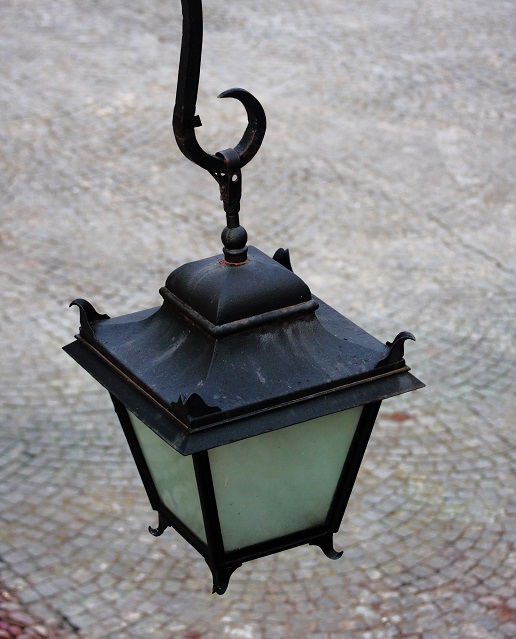
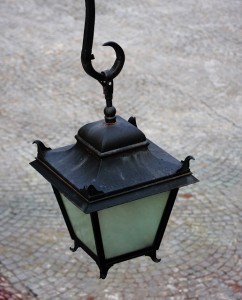
hahahaha….. bought a spiral-bound single-subject notebook yesterday to carry along w/ me while at work & around town…. I’m thinking I may pick up a smaller version (that’ll fit in my purse better) at the store tomorrow, and keep this bigger version here at home w/ the transcribed info in it. Once I start writing, it’s going to be on my laptop here, but I’m not sure what program I’ll be using, as I don’t exactly have the $ to shell out for Word at this point.
If you have (or sign up for) gmail, you have access to Google Drive in the top menu bar.
Once there, you have access to a very close approximation of both Word and Excel.
Another capturing/word-processing option is WordPress.com (or Blogger). Without publishing I would use the compose windows, titling each “new post” with my index-card title, and treat it very like Scrivener. That would be another free but multifunctional capture-method.
Didn’t know about Google Drive. Thanks!!
I’m interested in how you keep track of character ages throughout the events of your story. I have the same problem in my trilogy, with back-story and story combined covering over 30yrs.
Timelines don’t work, because they all want a specific BC or AD date, and I don’t want to do it that way. I want to be able to set future stories before or after my current set, without being limited by historical assumptions based on the date.
My characters have ages, and my events have time spans, but I don’t know how to combine that to get a comprehensive cheat sheet of how old someone was when such-and-such happened. I too have 45+ named characters (so far) that I’m trying to keep track of!
Any suggestions would be great! This has been a reoccurring problem that is coming to a head now that I’m planning my novel for NaNoWriMo.
My accountant friend (aka Excel wizard) wrote me a code based on a manually entered grid I sent him.
For example, I picked a date for my main character’s birthday, and made that year-zero. Then I determined people’s ages in relation to her, and major events the same way.
Best as I can interpret, he created the formula by using the zero-square and the difference in days, months and years.
Then, when I inserted an actual 3-part date, everything else lined itself up. The same for adding new events, or new characters.
I can’t tell you how he did it, not being one of those wizards, myself, but maybe you could call an accountant and get a quote? 🙂
If you do, I’d love it if you cam back and told us what you learned.